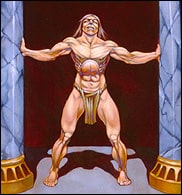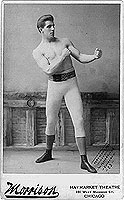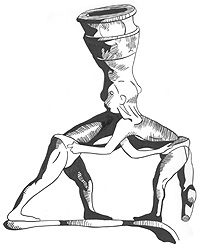A few months ago I was schlepping through the local Barnes & Noble’s having my own geek Christmas, buying books for myself. As always I was on the lookout for anything Native American, particularly about them being wiped out by my ancestors, so that I might have something additional for my science-fiction character, Native American time-traveler Three-Rivers, to get holistically militant about.
I found it there on the discount rack, precisely where anything I want to purchase should be located: a book on the Trail of Tears. I was thrilled to find a free bookmark inside. It turned out to be a promotional card for something called Maafa 21. I came home and checked out their site, found out it was all about a big money conspiracy to wipe out blacks, and put up a link on this site, which can still be found there on our Network page.
After hearing the producer of the documentary film Maafa 21 interviewed by a black activist on Living in Black Radio I had to buy it. Once again I made the sorrowful purchase for selfish reasons. I was writing Hurt Stoker, an alternative history about a world where the Confederacy defeated the Union in the American Civil War. My chief premise is that a victorious CSA would have set up a National Eugenics Board to oversee the black population, which, if British allies were to be appeased, would have to be granted ever more human rights. I bought this film because it promised to expose the American Eugenics Movement, and it lived up to that promise.
I have put off reviewing this thing for three months now. I fear that the subject is too volatile for this site, and dread the incoming commentary if I venture my own opinion, or even a rating of this film. I will just say that I found the viewing educational. I will not let you know if I agree or disagree with the conclusions. However, much of the evidence exists in the form of published quotes. So, at the very least, this film is a landmark study of what was, before Pearl Harbor and Hitler’s subsequent declaration of war against the United States of America, in fact a very strong international bond between the American White Supremacist Movement and Nazi Germany.
The only bit of perspective that I will offer here, as a race-trader who has often been privy to the conversations of modern White Supremacists and militant skinheads, is that those guys, that I have known; those guys that tried to have me killed for firing white men and hiring black men, vocally agreed then with the case that the author’s of this film now state is the hidden agenda behind the modern abortion industry. I have had no less than six white men tell me that black beneficiaries of state and federal welfare programs should undergo forced sterilized or mandatory birth control, and be compelled to choose abortion as a first option once pregnant.
That this is a sentiment still current in America should not be surprising. The prevalence of this sentiment is certainly a matter of debate. I do know from my own research into the efforts to pacify and then eradicate Amerindian culture that forced sterilization was commonly inflicted on post-conquest Native American women, even up into the 1950s. As Methodist preacher Colonel John M. Chivington said as he left Denver Colorado in 1864 to exterminate Black Kettle and his women and children at Sand Creek, “Kill them all, big and small, nits make lice!”
To be clear, I refuse to offer a rating for, or conclusion about, this film, other than to say I found the research on American eugenics to be penetrating if not comprehensive. I recommend this film for people who are socially curious like myself. Most liberals and most conservatives will find themselves growing angry either at the filmmakers or the subject of the filmmaker’s focus.
Note: at the close of the film a pastor discusses two men who wrote a book that concluded that there was a dip in projected modern crime rates due to the legalization and widespread use of abortion as birth control in the early 1970s. The book he was referencing was Freakonomics, by the authors of Superfreakonomics, which is cited as the basis for my conclusions in The Microeconomics of Wife-beating on this blog.











